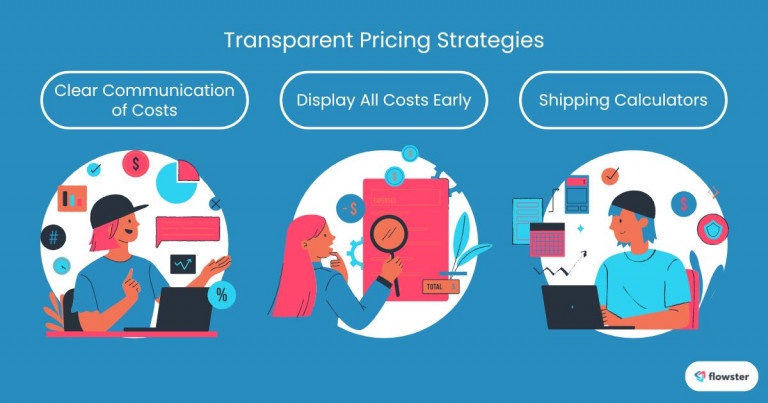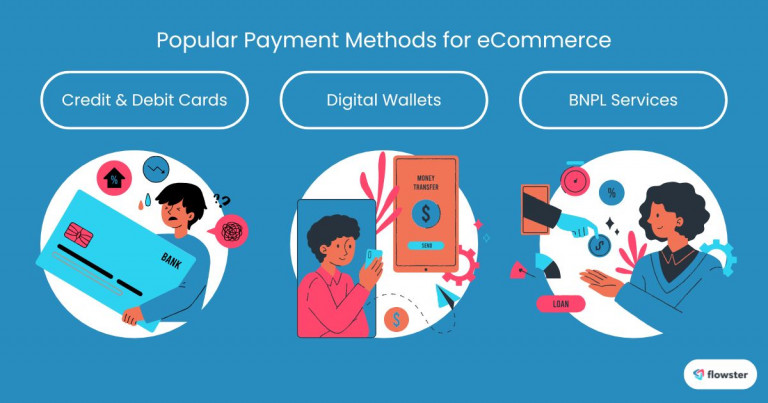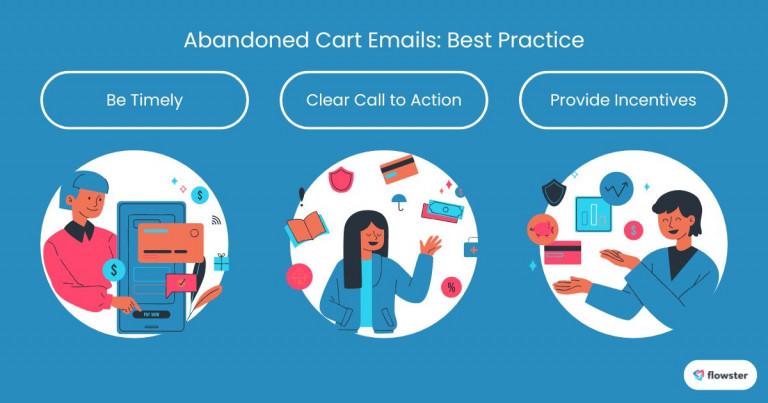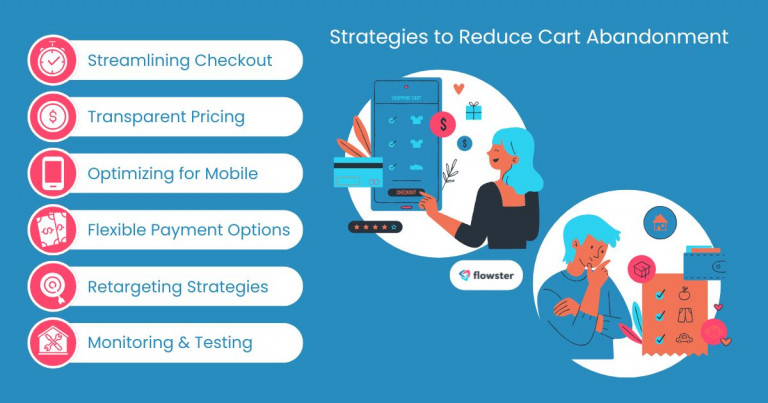Cart abandonment is a common challenge faced by many eCommerce businesses. It occurs when a customer adds items to their shopping cart but fails to complete the purchase. This can significantly impact revenue and hinder business growth.
One effective strategy to combat cart abandonment is through workflow optimization. By streamlining the checkout process and improving the overall customer experience, businesses can significantly reduce cart abandonment rates and boost conversions. In this post, we’ll explore several key strategies to optimize your workflow and drive more sales.
Article Outline
Streamlining the Checkout Process
A complex and time-consuming checkout process can be a major contributor to cart abandonment. By simplifying the steps involved, you can significantly improve the customer experience and increase conversions.
Simplification is Key
The fewer steps a customer has to take to complete a purchase, the more likely they are to follow through. Keep your checkout process as streamlined as possible by eliminating unnecessary fields and reducing form length.
One-Page Checkout
Consider implementing a one-page checkout process. This design consolidates all necessary information into a single page, reducing friction and improving the overall user experience.
Guest Checkout Options
Many customers prefer to make purchases without creating an account. Offering a guest checkout option can significantly reduce cart abandonment by eliminating the need for registration.
Autofill Capabilities
Autofill features can save customers time and effort by automatically filling in shipping and billing information. This can significantly speed up the checkout process and reduce the likelihood of abandonment.
By implementing these strategies, you can create a more efficient and user-friendly checkout process that drives more sales. To further enhance your eCommerce operations and streamline your workflow, consider automating repetitive tasks like order processing and inventory management. Furthermore, when you hire SCUBE Marketing or another PPC agency, you can improve campaign efficiency and better align your advertising strategies with your overall conversion goals. As outlined in Flowster’s article, “5 Ways Ecommerce Automation Can Boost Your Sales,” read now.
Capture Your Processes in Minutes!
Transparent Pricing
One of the most common reasons for cart abandonment is unexpected fees. By being upfront about pricing and avoiding hidden costs, you can significantly improve customer satisfaction and reduce cart abandonment.
Clear Communication of Costs
Make sure all costs are clearly communicated to customers throughout the shopping process. Avoid surprising customers with additional fees at checkout, as this can lead to frustration and abandonment.
Display All Costs Early
To build trust and transparency, display all relevant costs, including shipping, taxes, and handling fees, early in the checkout process. This allows customers to make informed decisions and avoid feeling deceived.
Shipping Calculators
Consider implementing a shipping calculator that provides real-time shipping cost estimates based on the customer’s shipping address and order total. This can help manage expectations and reduce cart abandonment caused by unexpected shipping costs.
By prioritizing transparency and clarity in your pricing strategy, you can create a more trustworthy shopping experience and drive more conversions. In the next section, we’ll explore how optimizing for mobile can further reduce cart abandonment.

Optimizing for Mobile
With the increasing popularity of mobile shopping, it’s crucial to optimize your eCommerce store for mobile devices. A poorly designed mobile experience can significantly contribute to cart abandonment.
Importance of Mobile Experience
A significant portion of online shopping now takes place on mobile devices. By providing a seamless mobile shopping experience, you can capture a larger share of the market and reduce cart abandonment.
Responsive Design
Ensure your website is fully responsive, adapting to different screen sizes and devices. A responsive design provides a consistent and optimal user experience across all platforms.
Simplified Navigation
Simplify navigation on mobile devices by using clear and concise menus. Avoid cluttered layouts and excessive scrolling, as these can frustrate mobile users and lead to cart abandonment.
By prioritizing mobile optimization, you can create a frictionless shopping experience that drives more conversions.
To further optimize your ecommerce workflow and reduce cart abandonment, consider implementing automation solutions as discussed in Flowster’s article, “eCommerce Process Management to Automate Efficiency.” By automating tasks like order processing and abandoned cart recovery, you can significantly improve your operational efficiency and customer satisfaction. Read now.
Flowster's AI-Driven Automation
Offering Flexible Payment Options
Providing a variety of payment options can significantly impact customer satisfaction and reduce cart abandonment. By catering to diverse preferences, you can make the checkout process more convenient and secure.
Catering to Diverse Preferences
Different customers have different payment preferences. Offering a range of payment options, such as credit cards, debit cards, digital wallets, and buy now, pay later (BNPL) services, can accommodate various needs and increase conversion rates.
Various Payment Methods
Ensure your eCommerce store supports a wide range of popular payment methods, including:
- Credit and Debit Cards: Major credit and debit cards (Visa, Mastercard, American Express, Discover) should be accepted.
- Digital Wallets: Offer support for popular digital wallets like Apple Pay, Google Pay, and PayPal.
- BNPL Services: Consider partnering with BNPL providers to offer flexible payment plans.
Multi-Currency Support
If you target an international audience, offering multi-currency support can significantly improve the shopping experience for foreign customers. This can help reduce cart abandonment caused by currency conversion fees and exchange rate fluctuations.
By offering flexible payment options, you can make the checkout process more convenient and secure, ultimately leading to higher conversion rates and lower cart abandonment rates.

Implementing Retargeting Strategies
Retargeting is a powerful strategy to reengage potential customers who have abandoned their carts. By reminding customers of their unfinished purchases, you can recover lost sales and reduce cart abandonment.
Reengaging Potential Customers
Retargeting involves displaying targeted ads to users who have visited your website but haven’t completed a purchase. This can be done through various channels, including email, social media, and display advertising.
Abandoned Cart Emails
Sending timely and personalized abandoned cart emails is a highly effective way to recover lost sales. Your emails should:
- Be timely: Send your first email within a few hours of abandonment.
- Offer a clear call to action: Encourage customers to return to their cart with a strong call to action.
- Provide incentives: Consider offering discounts or free shipping to incentivize purchases.
Retargeting Ads
Retargeting ads can be displayed on various websites and apps to remind customers of their abandoned carts. These ads should be visually appealing and highlight the products they were interested in.
By implementing effective retargeting strategies, you can recover a significant portion of lost sales and improve your overall conversion rate.

Continuous Monitoring and Testing
To ensure ongoing optimization and minimize cart abandonment, it’s crucial to continuously monitor and test your checkout process. By analyzing user behavior and conducting A/B tests, you can identify areas for improvement and make data-driven decisions.
Analyzing User Behavior
By tracking user behavior on your website, you can gain valuable insights into customer preferences and pain points. Tools like Google Analytics can help you identify areas where customers are dropping off, allowing you to make targeted improvements.
A/B Testing Different Checkout Flows
A/B testing involves creating two or more versions of a page or element and testing them against each other to determine which performs better. By testing different checkout flow variations, you can identify the most effective design and reduce cart abandonment.
Monitoring Analytics
Keep a close eye on key metrics such as:
- Cart abandonment rate: Track this metric to measure the effectiveness of your optimization efforts.
- Conversion rate: Monitor your conversion rate to assess the overall performance of your checkout process.
- Average order value: Analyze your average order value to identify opportunities for upselling and cross-selling.
By continuously monitoring and testing your checkout process, you can make data-driven decisions to optimize your workflow and reduce cart abandonment.
To further optimize your ecommerce operations, consider the broader strategies outlined in Flowster’s article, “7 Proven Strategies to Supercharge Ecommerce Workflows.” By streamlining your overall workflow, you can improve efficiency, enhance customer experience, and indirectly reduce cart abandonment. Read now.

Conclusion: Optimizing Your Workflow for Success
By implementing the strategies outlined in this post, you can significantly reduce cart abandonment and boost your eCommerce sales. Remember, a streamlined checkout process, transparent pricing, mobile optimization, flexible payment options, and effective retargeting can make a significant difference in your customer experience and bottom line.
To help you get started optimizing your workflows, consider using free workflow templates from Flowster Marketplace. These templates can help you streamline your processes and improve efficiency. Flowster also offers “Done-for-You” services to help you create and implement custom workflows tailored to your specific needs.
By prioritizing workflow optimization and continuously monitoring your performance, you can create a more efficient and customer-centric shopping experience that drives growth and success.




